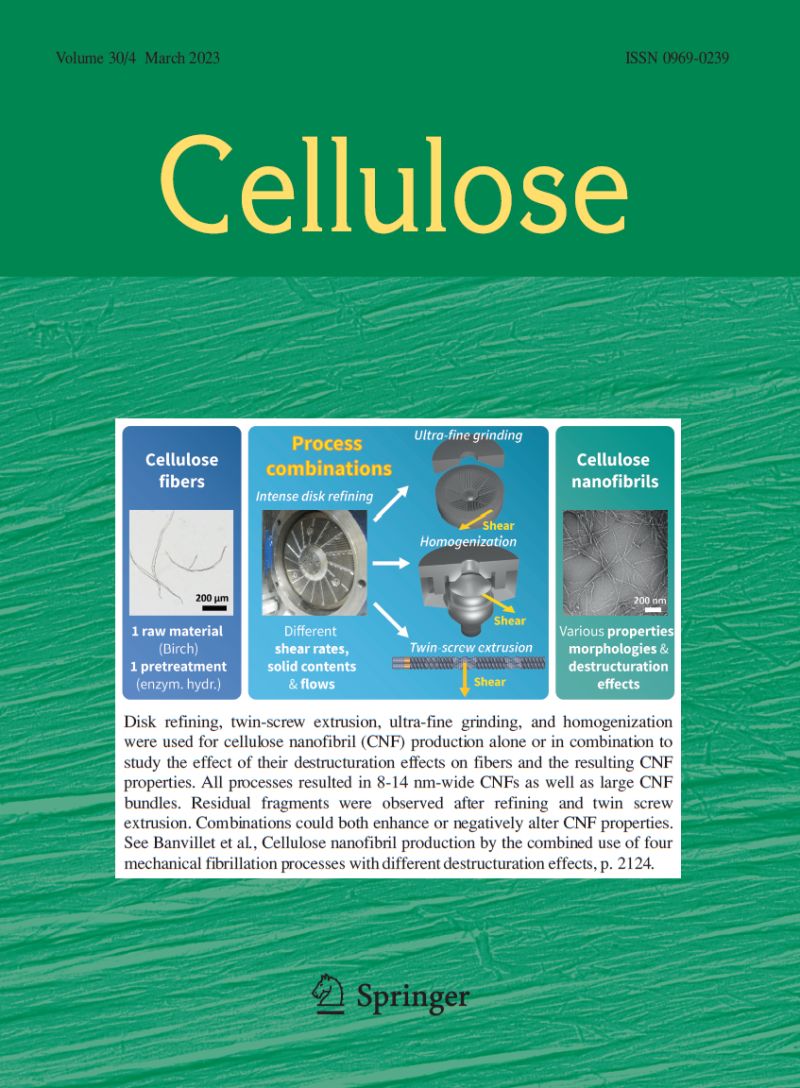A tough lignin/nanocellulose based hydrogels strain sensor with ultrafast gelling process
Abstract
Hydrogel materials have gained popularity due to their excellent properties. However, traditional hydrogels’ poor mechanical property and long polymerization time (or needing external stimuli) limit their practical application. Herein, lignin, trivalent iron ion (LS-Fe3+) and nanocellulose were introduced into the precursor fluid to constitute hydrogel without external heating/UV radiation. The results showed that the content of LS was positively correlated with the forming time. When the content of LS was 8 wt%, the hydrogel could be rapidly formed within 63 s. Additionally, the presence of lignosulfonate and nanocellulose made the hydrogel have a variety of non-covalent bonds and covalent bonds, which contributed to good tensile strength (227 kPa) and elongation at break (515%). In addition, the hydrogel could be applied as a strain sensor to monitor the joint movement of the human body.

 求助内容:
求助内容: 应助结果提醒方式:
应助结果提醒方式:


